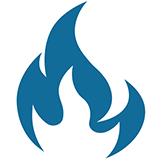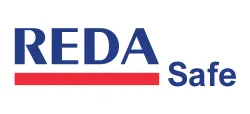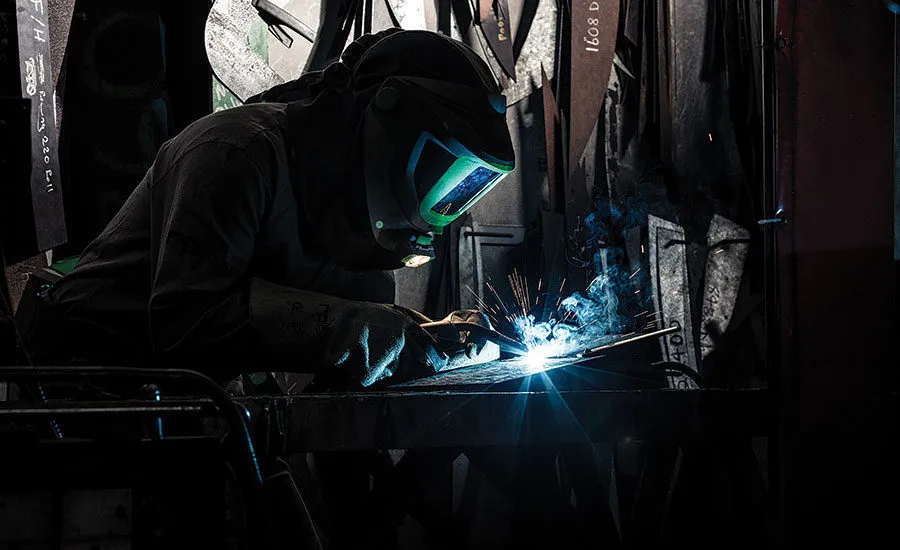Fires and explosions
The National Fire Protection Association 51B standard covers fire prevention during welding, cutting and other types of “hot work” – a term for any activity that produces flames, sparks and/or heat. The standard is included by reference in part of OSHA’s rules for welding, cutting and brazing (1910 Subpart Q).
The 51B standard calls for welding and other hot work to be performed in a designated area, defined as “a specific location designed and approved for hot work operations that is maintained fire-safe” and “that is of noncombustible or fire-resistive construction, essentially free of combustible and flammable contents, and suitably segregated from adjacent areas.”
If a designated area isn’t available, the next step is a thorough and detailed hazard assessment, which includes a hot work permitting system.
Workers must move any combustible materials at least 35 feet away from where welding and other hot work will occur. If this can’t be accomplished, the materials must be shielded with welding blankets, curtains or pads. ANSI/FM 4950 provides the requirements for these protective items.
The 35-foot boundary can increase based on worksite conditions, especially when outdoors or working at elevation. The NFPA standard provides an illustration.
The standard also details the duties of a particular, important member of a hot work team: the fire watch. This person is tasked with looking for embers, sparks or anything else that may start a fire. If a fire occurs, the fire watch must attempt to extinguish it or alert someone.
During hot work at an elevated level, multiple fire watches are required to be on the lookout for sparks or embers that might ignite below. The fire watch is required to remain on the scene for 60 minutes after work is completed – an increase from 30 minutes in previous 51B standards.
When welding or hot work is performed around tanks or in areas where combustible materials may be present, the Chemical Safety Board recommends employers and workers:
- Use alternative methods, when possible.
- Perform a thorough hazard assessment.
- Monitor the atmosphere with a calibrated gas detector, even “in areas where a flammable atmosphere is not anticipated.”
- Use written permits.
- Thoroughly educate personnel on hot work policies and procedures.
- Supervise contractors.
George said an additional fire hazard stems from issues with gas or oxygen tanks and bottles used in different types of welding.
“Another requirement is making sure that the bottles are mounted correctly and the use of proper regulators,” he said. “That’s why it’s a skill when people use oxyacetylene or [different mixtures].”
Burn hazards

Welding exposes workers to intense heat – often thousands of degrees – making burn injuries common. According to the Bureau of Labor Statistics, more than one-third (140) of the 370 welding- and heating tool-related injuries requiring days away from work in 2018 were thermal or heat burns.
Wearing the proper personal protective equipment, along with inspecting and maintaining it, is a key step to preventing burns. This can mean making sure gloves and clothing don’t have holes; using flame-resistant hearing protection; and not wearing clothes with cuffs or open pockets, where sparks or molten metal can become trapped.
The American Welding Society advises the use of oil-free, non-melting FR protective garments such as leather gloves, a heavy shirt, high shoes and a cap. The organization also recommends wearing leather leggings and FR boots, as needed.
Radiation

Another source of burns is radiation, or electromagnetic energy, that reaches the skin. One form of radiation, ultraviolet rays, can be harmful to workers’ eyes – resulting in “welders’ eye” or “arc eye” (a reference to arc welding). Sometimes the effects are not felt until several hours after an exposure, the Canadian Center for Occupational Health and Safety warns.
Symptoms may include mild pressure to intense pain in the eyes, bloodshot eyes, eye irritation (a feeling like sand in the eye, according to CCOHS) and sensitivity to light.
Employers must ensure welders wear helmets with the proper shade of filter plate, according to OSHA 1910.133(a)(5). The AWS F2.2 standard details lens shade selection.
AWS provides additional tips, including wearing a welding helmet and safety glasses with UV protective side shields. The organization also advises the use of a screen, curtains or adequate distance to avoid exposing other workers to radiation, and having anyone near the welding or cutting area wear safety glasses with UV protective side shields.
Side shields provide eye and face protection against chips and other debris from the welding process, according to OSHA. AWS advises wearing safety glasses with top and side protection under a welding helmet.
Electricity

Arc welding requires electricity, so electrical shock and electrocution are ever-present hazards. One culprit is damaged welding leads, George said. When this happens, the electrical circuit is no longer contained.
Arc welding uses an electrode cable that powers the welding lead and a ground cable to create that circuit. Damaged or improperly maintained equipment – such as cables or missing/burned out insulators, or faulty connections – can cause shock injuries or electrocution.
Another danger: Some welders attempt to replace a welding electrode or contact tip with their bare hands, instead of wearing a dry welding glove.
“People become complacent and forget the basics,” said Michael Ludwig, staff welding engineer in AWS’s Technical Services Division. He gave an example: “It’s hot and you are sweating and you’ve changed wire or contact tips hundreds of times without gloves, but now you are wet and things could happen.”
Fumes and gases

Because welding involves the fusing of metals, and sometimes the addition of filler metals to enhance a weld, emission of hazardous fumes is a potential risk. The most dangerous fumes come from hexavalent chromium and manganese.
Exposure to hexavalent chromium can cause lung cancer or issues with the respiratory tract, such as the development of sores in the nose or a hole in the septum, which separates the nasal passages. It also can cause irritation and other conditions to the eyes and skin in certain concentrations.
Prolonged exposures to manganese fumes has been linked to Parkinson’s-like symptoms and other nervous system issues, according to OSHA. The Centers for Disease Control and Prevention states that breathing in large quantities of manganese fumes or dust may lead to pneumonia in certain cases or male fertility issues.
OSHA warns that gases such as helium, argon and carbon dioxide displace oxygen and may cause suffocation – particularly when welding in a confined or enclosed space. Some welding processes involve shielding gas, typically an inert or semi-inert gas. Shielding gases are used to keep oxygen or water vapor away from the welding pool, or the mixture of molten materials. If oxygen or water gets into the pool, it can degrade the quality of the weld.
The use of engineering controls is the preferred measure for managing welding fumes and gases. These controls include general or local exhaust ventilation. Other control methods include the use of fume extraction welding guns and, according to OSHA, the substitution of “lower fume-generating or less toxic welding type or consumable.”
If engineering controls or work practices are not adequate to control exposures to fumes to an acceptable level, the use of respirators is the final step. Choosing the proper respirator will depend on an analysis of the exposure level to a hazard(s), the exposure limit for the substance(s) involved and the respirator’s assigned protection factor.
The use of a respirator will require a written respiratory protection program, a medical evaluation and a fit test if the respirator is designed to be “tight fitting.”
Other hazards

Physical hazards that can cause burns, eye damage, cuts, and crushed toes and fingers are ever-present when welding. With the appropriate Personal Protective Equipment (PPE) and other safety measures, you can protect your workers against physical hazards.
Other welding-related dangers include noise; ergonomic problems from awkward body positions and repetitive stress; and slips, trips or falls resulting from hoses or other equipment laying on the ground.
Steve Hedrick, safety and health manager at AWS, highlighted four additional categories of welding hazards: mechanical, electrical and magnetic fields, falling objects, and those in the work environment such as lead paint or asbestos.
“I believe that most employers want to provide a safe and healthy environment, and workers want a safe and healthy environment,” Hedrick said. “However, lack of knowledge and the unwillingness of some employers to provide the resources for a safe work environment may be obstacles to improving welder safety.”


